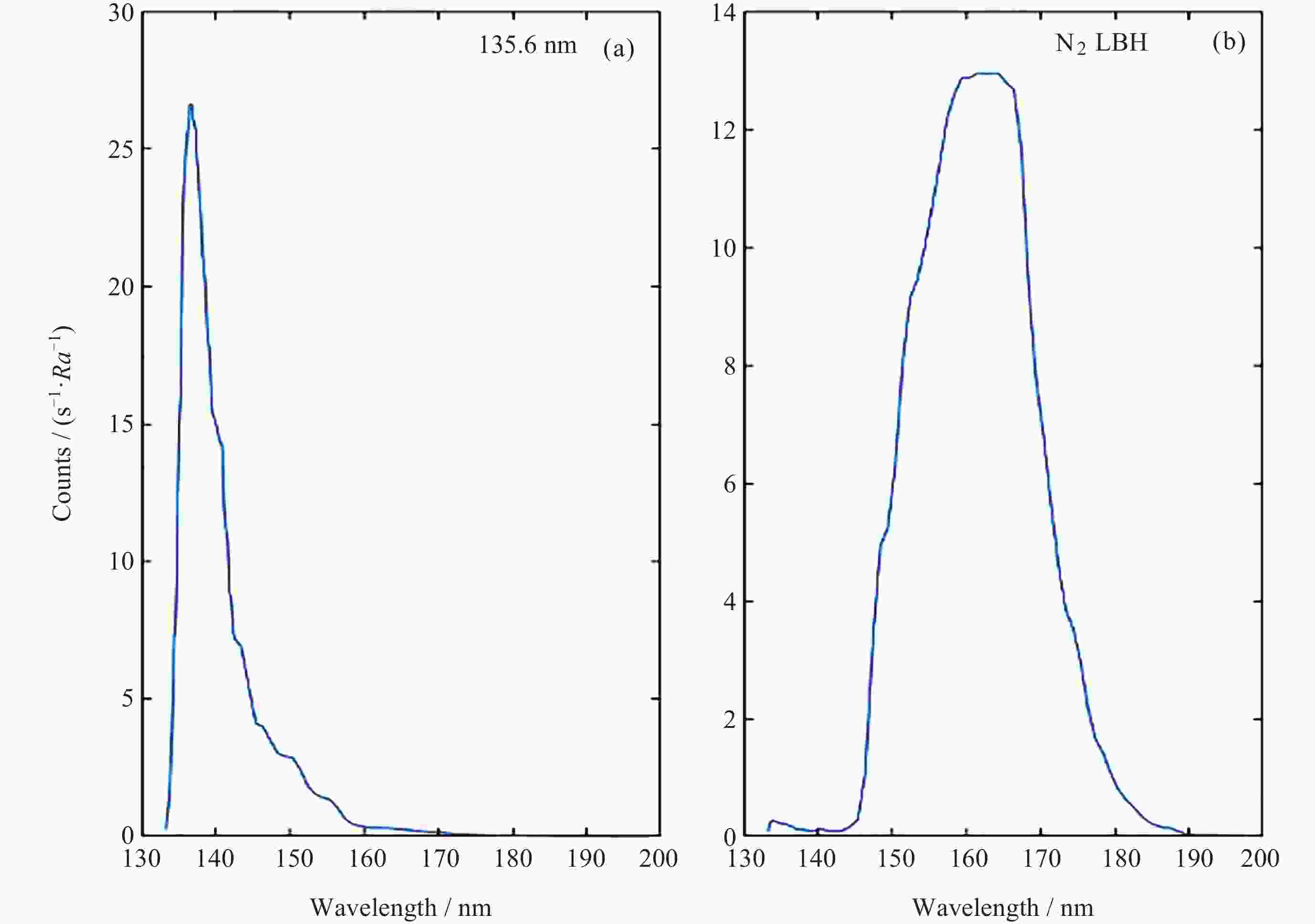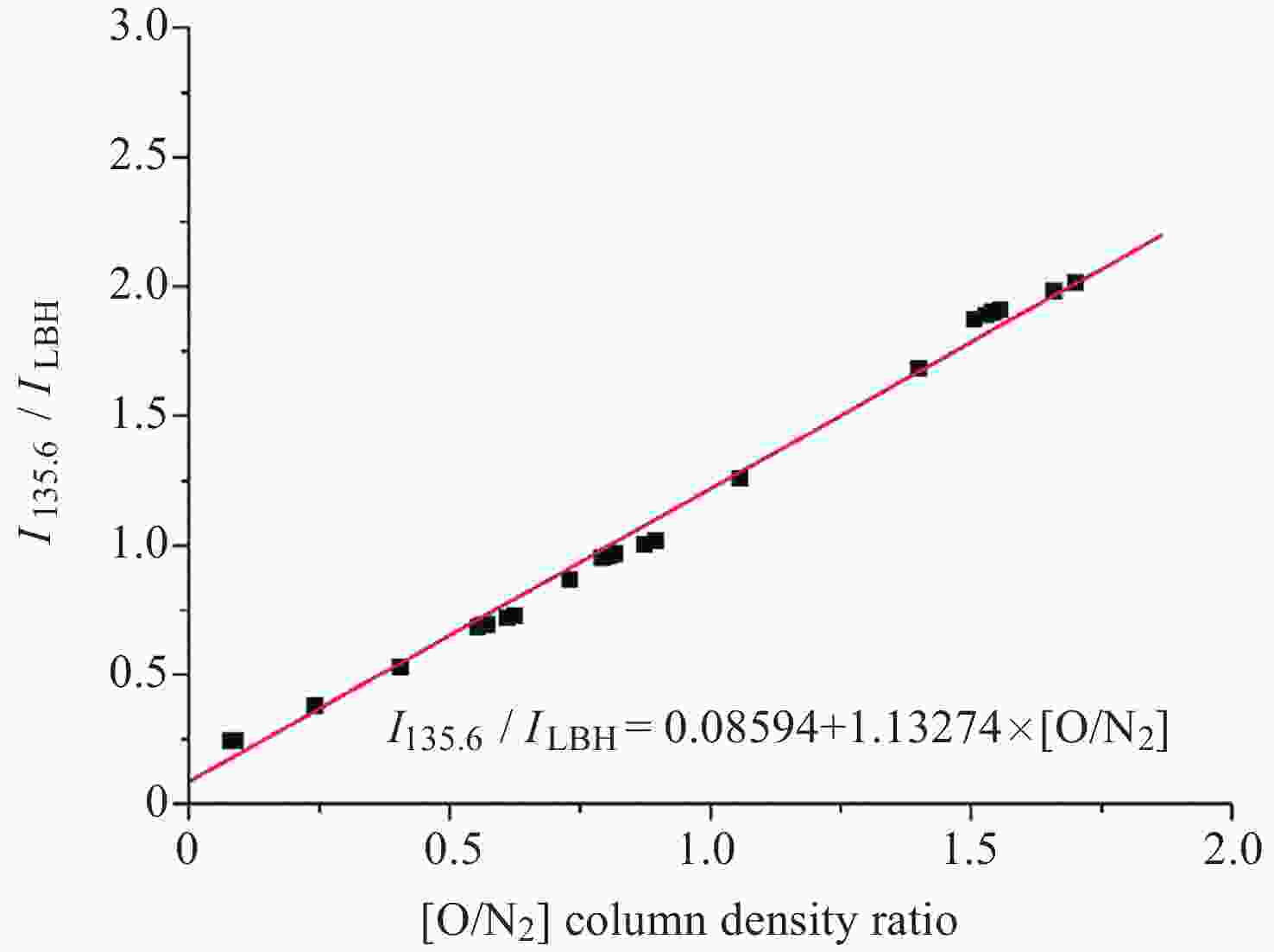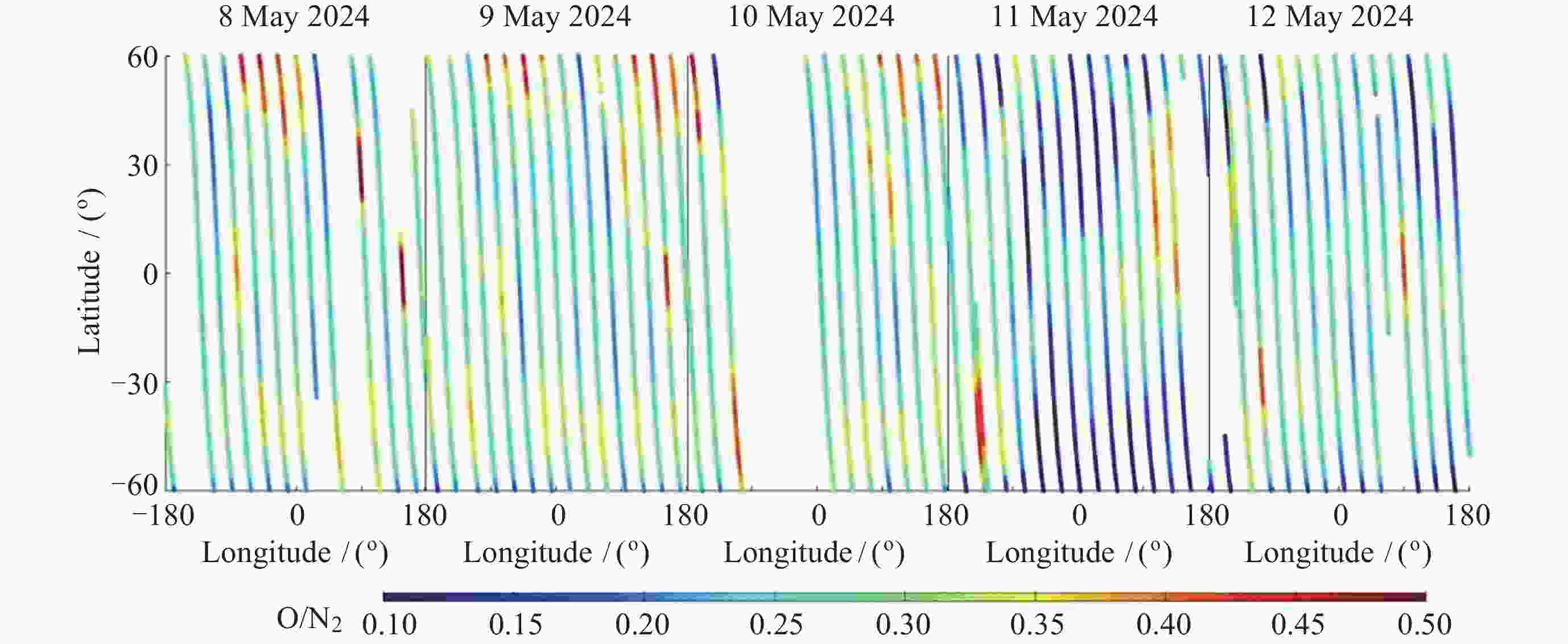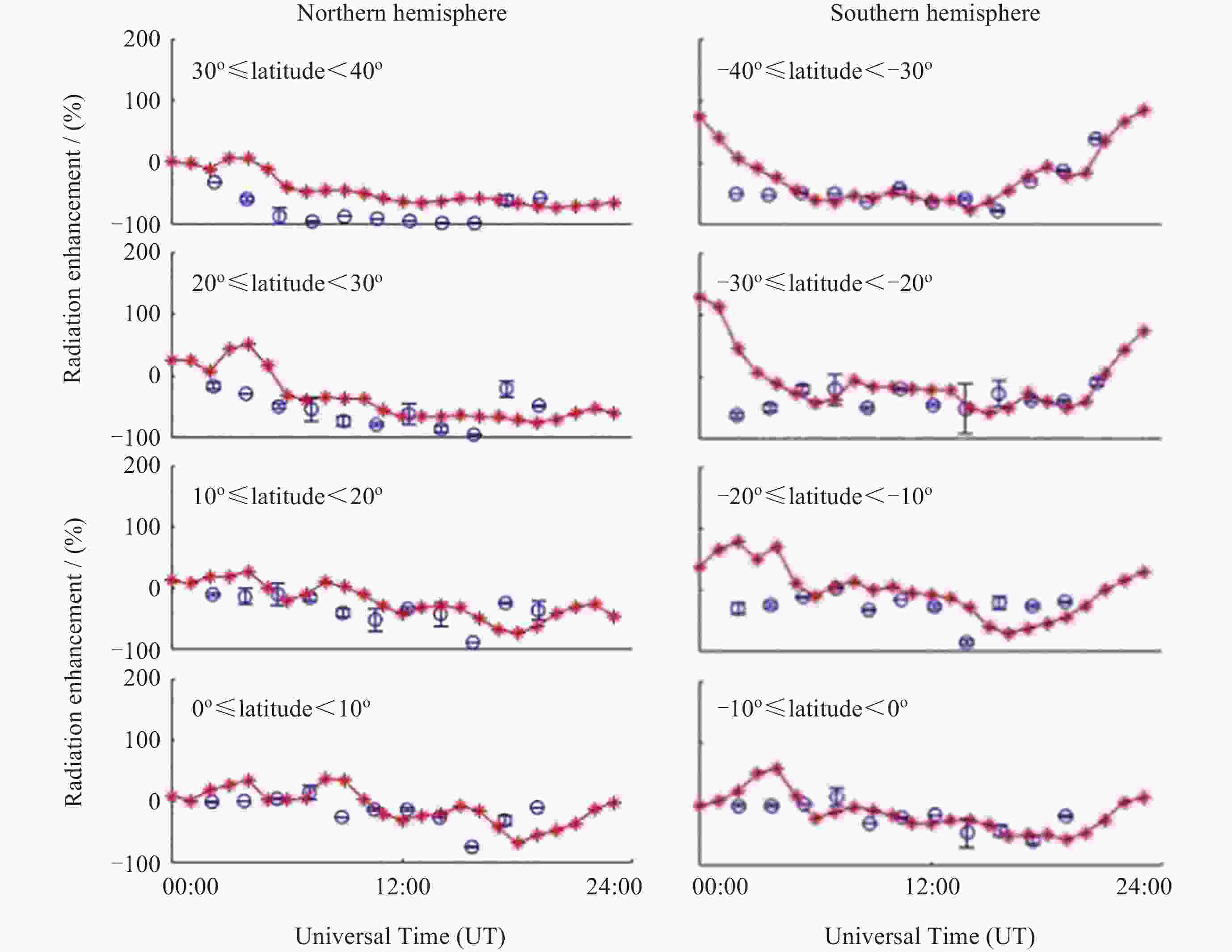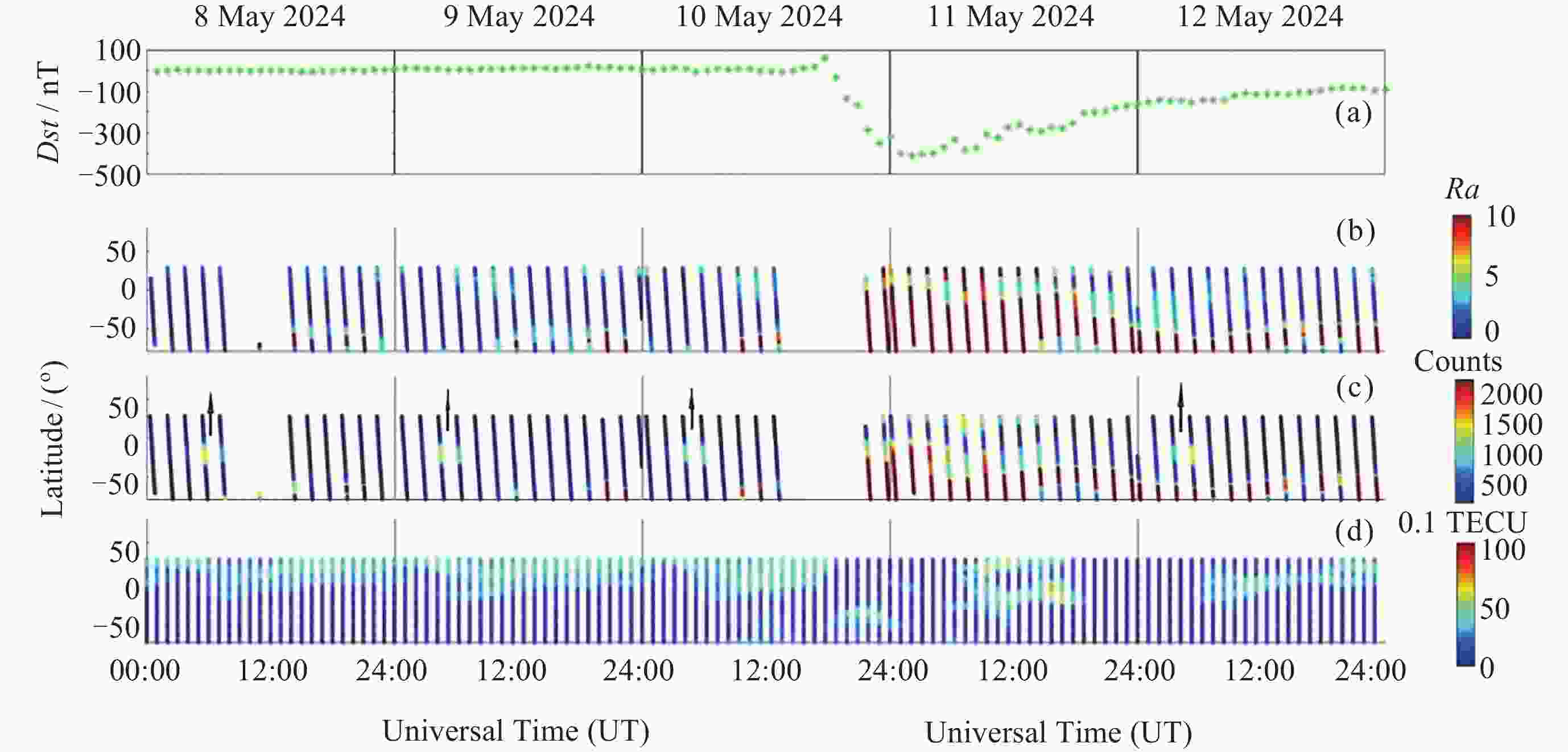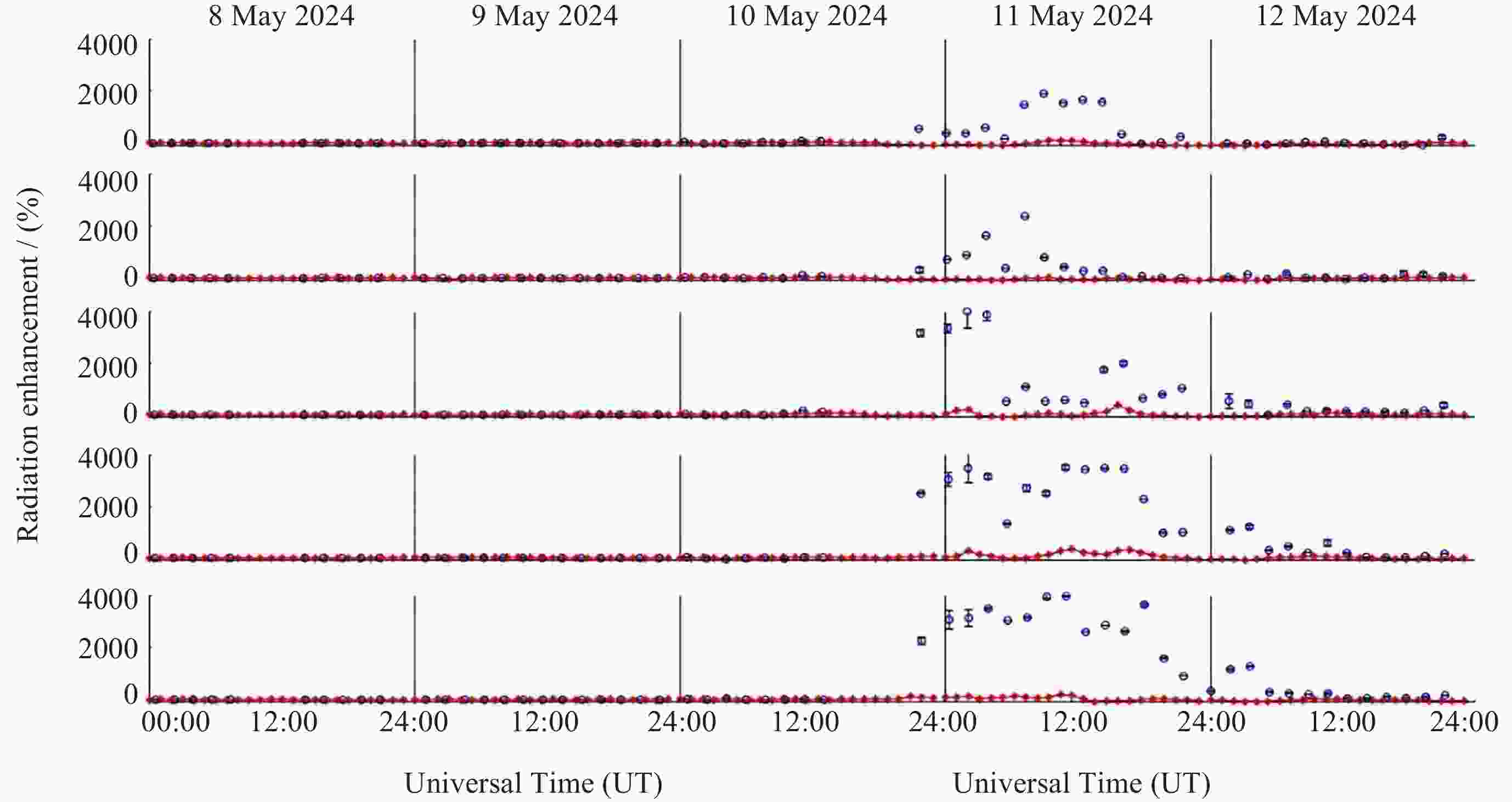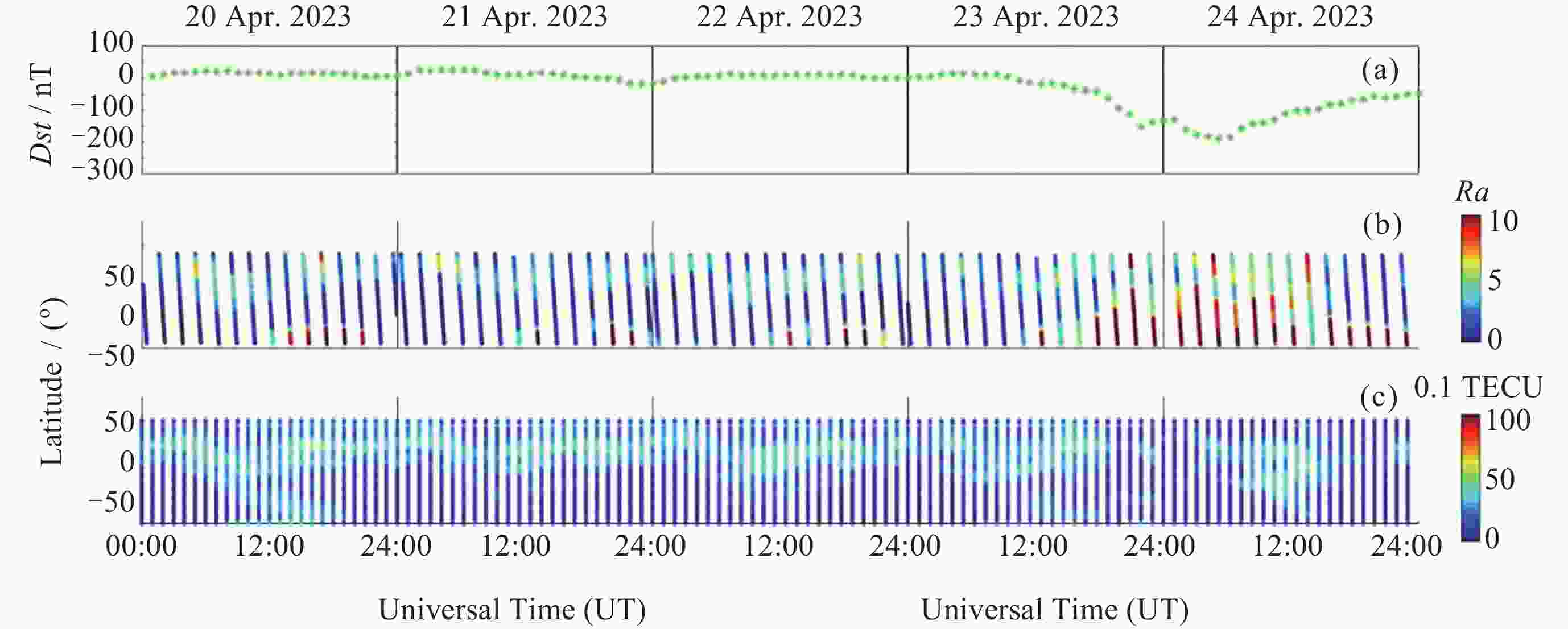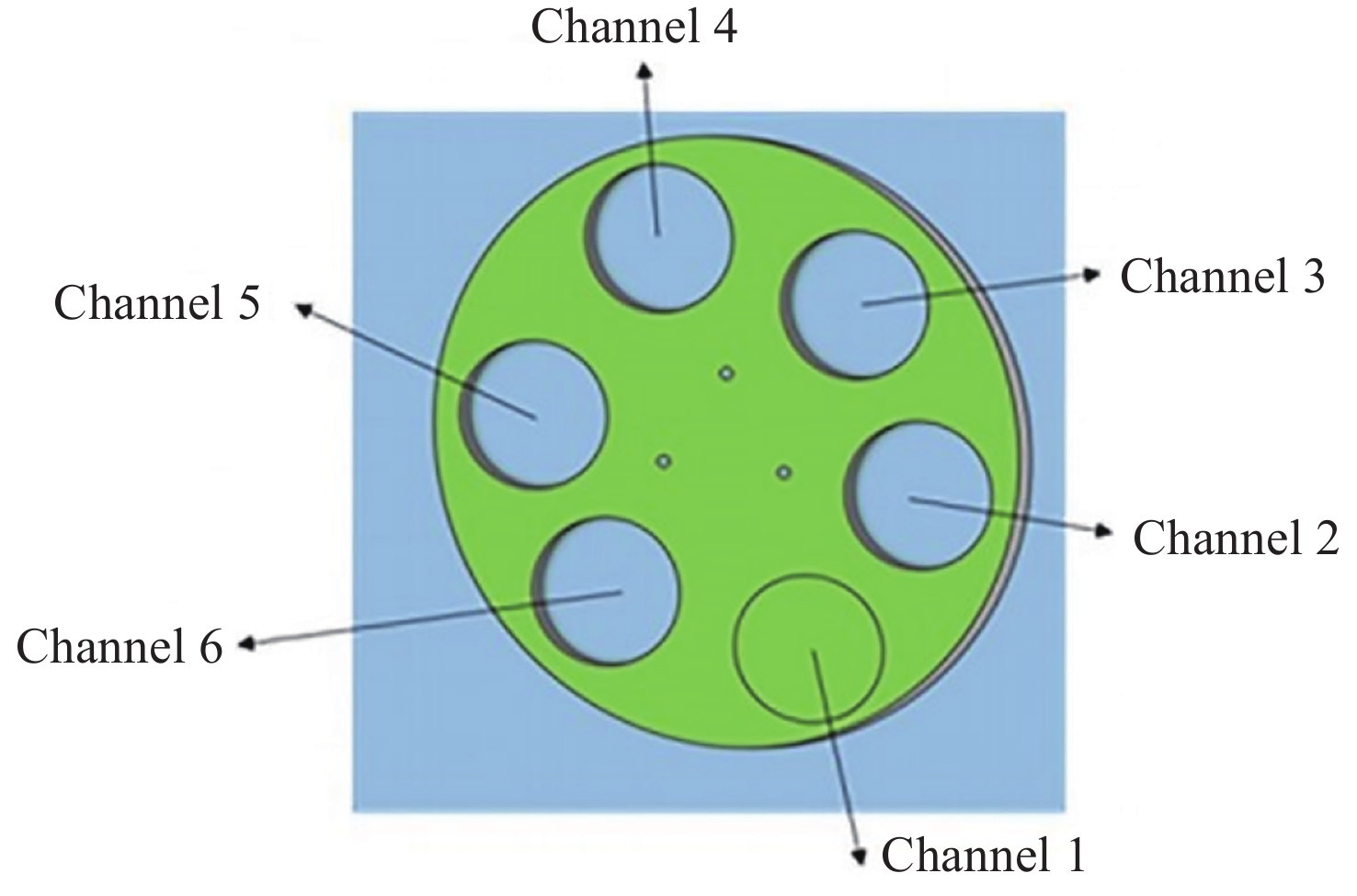FY-3D 电离层光度计IPM对2024年5月11日特大磁暴的响应研究
doi: 10.11728/cjss2025.04.2024-0079 cstr: 32142.14.cjss.2024-0079
Study of FY-3D Ionospheric Photometer (IPM) Response to the Extreme Magnetic Storm on 11 May 2024
-
摘要: 远紫外气辉探测仪小型电离层光度计IPM随FY-3D卫星于2017年11月15日发射升空, 通过对地测量夜间O+和电子辐射复合产生的135.6 nm辉光辐射、白天光电子碰撞激发产生的OI 135.6 nm 和N2 LBH辉光辐射, 可以反演得到夜间峰值电子密度NmF2、白天大气氧原子与氮气分子的柱密度比O/N2等重要参数. 本文对2024年5月11日特大磁暴事件中IPM的数据响应进行分析, 对白天数据的研究结果表明, 本次磁暴事件过程中, O/N2在各个纬度较磁平静日均是减小的, 可用于解释IGS (International GNESS Service) TEC在各纬度大多呈现的负暴效应. 对夜间数据研究发现,磁暴日夜间135.6 nm辐射强度相对磁平静日呈现各纬度的增大, 增大幅度可达3个数量级, 且从磁暴主相开始一直持续到恢复相, 而对应的TEC数据并没有如此大的增强; 另外, 测量190 nm以上波长辐射贡献的夜间杂散光通道在磁暴日也相应地增强, 而这一波段的辐射机制与电离层并无直接关联.
-
关键词:
- Dst指数 /
- 135.6 nm辉光辐射 /
- N2 LBH带辉光辐射 /
- O/N2
Abstract: With the launch of the FY-3D satellite on 15 November 2017, the far ultraviolet Ionospheric Photometer (IPM) on board enables measurements of nighttime 135.6 nm airglow emissions generated by the recombination of O+ ions and electrons, as well as daytime emissions from OI 135.6 nm and N2 LBH due to photoelectron impact on atomic oxygen and molecular nitrogen. These measurements can obtain the key parameters such as nighttime peak electron density NmF2 and daytime O/N2. The paper analyzes the response of IPM data during the extreme magnetic storm event on 11 May 2024. The study results of daytime data indicate that during the event, the O/N2 decreased at all latitudes compared to geomagnetically quiet days. This finding can be used to explain the negative storm effects observed in IGS TEC. The study of nighttime data reveals that during magnetic storms, the intensity of 135.6 nm increases significantly across all latitudes compared to geomagnetically quiet days, with an increase by up to three orders of magnitude. The enhancement persists from the storm main phase through the recovery phase. However, corresponding TEC data does not show such a pronounced increase. Furthermore, the stray light channel measuring radiation contribution above 190 nm wavelength also exhibits a significant increase during magnetic storm days. This further indicates that the enhancement of nighttime 135.6 nm radiation is not solely derived from ionospheric contributions.-
Key words:
- Dst index /
- 135.6 nm airglow emissions /
- N2 LBH airglow emission /
- O/N2
-
图 6 2024年5月11日各纬度区间的O/N2 (蓝线)及TEC (红线)均值相对磁平静日对应纬度均值的变化
Figure 6. Mean value of O/N2 (the blue line) and the mean Total Electron Content (TEC) for various latitude intervals (the red line) on 11 May 2024. The changes are relative to the mean values of corresponding latitudes during geomagnetically quiet days
表 1 滤光片轮各通道信息
Table 1. Channel information of the filter wheel
通道号 滤光片 测量波段 工作模式 1 挡板 暗计数 白天/夜间 2 带通滤光片(中心波长: 135.6 nm) 135.6 nm 白天 3 带通滤光片(中心波长: 160 nm) LBH 白天 4 滤光片(190 nm以上波长) 带外光 白天 5 孔 135.6 nm 夜间 6 石英 带外光 夜间 -
[1] AKASOFU S I. Prediction of development of geomagnetic storms using the solar wind-magnetosphere energy coupling function [J]. Planetary and Space Science, 1981, 29(11): 1151-1158 doi: 10.1016/0032-0633(81)90121-5 [2] CANDER L R, HARALAMBOUS H. On the importance of total electron content enhancements during the extreme solar minimum[J]. Advances in Space Research, 2011, 47(2): 304-311 doi: 10.1016/j.asr.2010.08.026 [3] BURNS A G, KILLEEN T L, CARIGNAN G R, et al. Large enhancements in the O/N2 ratio in the evening sector of the winter hemisphere during geomagnetic storms[J]. Journal of Geophysical Research: Space Physics, 1995, 100(A8): 14661-14671 doi: 10.1029/94JA03235 [4] KONSTANTIN R, MAKSIM K, VLADIMIR K, et al. After-effects of geomagnetic storms: statistical analysis and theoretical explanation[J]. Solar-Terrestrial Physics, 2018, 4(4): 26-32 doi: 10.12737/stp-44201804 [5] STRICKLAND D J, DANIELL R E, CRAVEN J D. Negative ionospheric storm coincident with DE 1-observed thermospheric disturbance on October 14, 1981[J]. Journal of Geophysical Research: Space Physics, 2001, 106(A10): 21049-21062 doi: 10.1029/2000JA000209 [6] HUANG C M, CHEN M Q, LIU J Y. Ionospheric positive storm phases at the magnetic equator close to sunset[J]. Journal of Geophysical Research: Space Physics, 2010, 115(A7): A07315 doi: 10.1029/2009JA014936 [7] KUAI J W, LI Q L, ZHONG J H, et al. The ionosphere at middle and low latitudes under geomagnetic quiet time of December 2019[J]. Journal of Geophysical Research: Space Physics, 2021, 126(6): e2020JA028964 doi: 10.1029/2020JA028964 [8] WAN Q T, MA G Y, MARUYAMA T, et al. Characteristics of ionospheric storm on October 13, 2016 at the Greenwich meridian[J]. Journal of Geophysical Research: Space Physics, 2021, 126(11): e2020JA028823 doi: 10.1029/2020JA028823 [9] Zhang Y L, Paxton Larry, Schaefer Robert. Ionospheric and thermospheric contributions in TIMED/GUVI O 135.6 nm Radiances[J]. Journal of Geophysical Research: Space Physics, 2021, 126(9): 1-13 [10] DYMOND K F, THONNARD S E, MCCOY R P, et al. An optical remote sensing technique for determining nighttime F region electron density[J]. Radio Science, 1997, 32(5): 1985-1996 doi: 10.1029/97RS01887 [11] STRICKLAND D J, COX R J, MEIER R R, et al. Global O/N2 derived from DE 1 FUV dayglow data: technique and examples from two storm periods[J]. Journal of Geophysical Research: Space Physics, 1999, 104(A3): 4251-4266 doi: 10.1029/98JA02817 [12] KIL H, LEE W K, SHIM J, et al. The effect of the 135.6 nm emission originated from the ionosphere on the TIMED/GUVI O/N2 ratio[J]. Journal of Geophysical Research: Space Physics, 2013, 118(2): 859-865 doi: 10.1029/2012JA018112 [13] JIANG F, MAO T, ZHANG X X, et al. Observation of thermosphere and ionosphere using the Ionosphere PhotoMeter (IPM) on the Chinese meteorological satellite FY-3D[J]. Advances in Space Research, 2020, 66(9): 2151-2167 doi: 10.1016/j.asr.2020.07.027 [14] JIANG F, MAO T, ZHANG X X, et al. The day-glow data application of FY-3D IPM in monitoring O/N2[J]. Journal of Atmospheric and Solar-Terrestrial Physics, 2020, 205: 105309 doi: 10.1016/j.jastp.2020.105309 [15] YOUNAS W, KHAN M, AMORY-MAZAUDIER C, et al. Middle and low latitudes hemispheric asymmetries in ∑O/N2 and TEC during intense magnetic storms of solar cycle 24[J]. Advances in Space Research, 2022, 69(1): 220-235 doi: 10.1016/j.asr.2021.10.027 [16] STRICKLAND D J, EVANS J S, PAXTON L J. Satellite remote sensing of thermospheric O/N2 and solar EUV: 1. Theory[J]. Journal of Geophysical Research: Space Physics, 1995, 100(A7): 12217-12226 doi: 10.1029/95JA00574 [17] 王大鑫, 付利平, 江芳, 等. 利用FY-3(D)卫星电离层光度计数据反演电离层O/N2[J]. 光谱学与光谱分析, 2021, 41(4): 1004-1010WANG Daxin, FU Liping, WANG Fang, et al. Inversion of ionospheric O/N2 by using FY-3D ionospheric photometer data[J]. Spectroscopy and Spectral Analysis, 2021, 41(4): 1004-1010 [18] ZHANG Y, PAXTON L J, KOZYRA J U, et al. Nightside thermospheric FUV emissions due to energetic neutral atom precipitation during magnetic superstorms[J]. Journal of Geophysical Research: Space Physics, 2006, 111(A9): A09307 doi: 10.1029/2005JA011152 [19] TINSLEY B A, ROHRBAUGH R P, RASSOUL H, et al. Spectral characteristics of two types of low latitude aurorae[J]. Geophysical Research Letters, 1984, 11(6): 572-575 doi: 10.1029/GL011i006p00572 [20] MEIER R R, WELLER C S. Observations of equatorial EUV bands: evidence for low-altitude precipitation of ring current helium[J]. Journal of Geophysical Research, 1975, 80(19): 2813-2818 doi: 10.1029/JA080i019p02813 [21] MENDILLO M. Storms in the ionosphere: patterns and processes for total electron content[J]. Reviews of Geophysics, 2006, 44(4): RG4001 doi: 10.1029/2005RG000193 [22] PARESCE F. EUV observations of the equatorial aurora[J]. Journal of Geophysical Research: Space Physics, 1979, 84(A8): 4409-4412 doi: 10.1029/JA084iA08p04409 [23] STEPHAN A W, CHAKRABARTI S, COTTON D M. Evidence of ENA precipitation in the EUV dayglow[J]. Geophysical Research Letters, 2000, 27(18): 2865-2868 doi: 10.1029/2000GL000040 [24] STEPHAN A W, CHAKRABARTI S, DYMOND K F, et al. Far ultraviolet equatorial aurora during geomagnetic storms as observed by the low-resolution airglow and aurora spectrograph[J]. Journal of Geophysical Research: Space Physics, 2001, 106(A12): 30323-30330 doi: 10.1029/2001JA001103 -
-





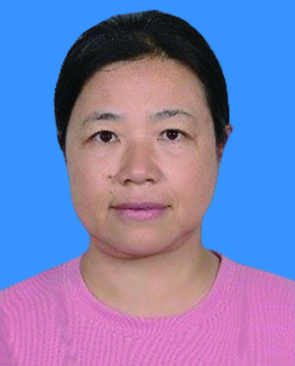 江芳 女, 1977年1月生于江苏省淮安市, 现为中国科学院国家空间科学中心副研究员, 主要研究方向为中高层大气光学遥感研究. E-mail:
江芳 女, 1977年1月生于江苏省淮安市, 现为中国科学院国家空间科学中心副研究员, 主要研究方向为中高层大气光学遥感研究. E-mail: 

 下载:
下载:
